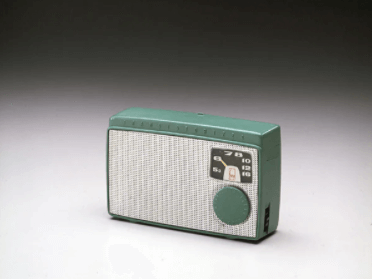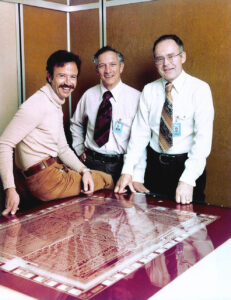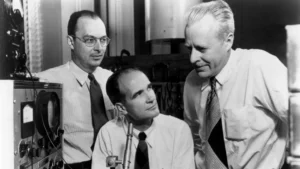Explore the remarkable journey of SONY, guided by the philosophy “Japan can never say NO” and the visionary leadership of Akio Morita.
“America looks 10 minutes ahead, Japan Looks 10 years ahead”
Akio Morita, Founder Sony
Journey of SONY
Sony annual revenue for the year 2022 amounted to $81.3 billion. During the same year, the company employed 111,000 individuals and maintained a presence in over 204 countries. As of February 2023, Sony market capitalization stands at $101.83 billion. However, the company’s trajectory was not always as impressive.
The roots of Sony stretch back to the aftermath of World War II, in the Minato ward of Tokyo. It was established during this time as a modest radio repair shop, operating under a different name.
Despite commencing its journey with borrowed funds, a workshop lacking windows, and limited equipment, Sony’s dedicated team propelled it towards its current status as a prominent contender in the realm of electronics.
Let’s journey back to the era of World War II to delve into the origins of this remarkable story.
A 500$ partnership to revolutionise consumer electronics
Amidst the chaos of March 1945 during World War II, Japan faced escalating turmoil from bombings and the crumbling axis powers. This led to the mobilization of special reinforcements by the Japanese military. In this context, Akio Morita, a weapons researcher, and Masaru Ibuka, a navy lieutenant, were brought together. Little did they know that they would eventually co-found Sony.
After World War II, Morita and Ibuka’s military careers ended, and they navigated Japan’s post-war unemployment. In 1946, Ibuka started repairing radios in a small workshop, and he later established Tokyo Tsushin Kenkyujo (TTK) with his team.
The breakthrough for their business came with converters—devices that allowed regular radios to access shortwave frequencies. This innovation was born out of the need for information after the war, when radios were either damaged or disconnected from shortwave units to prevent propaganda access.
Impressed by Ibuka’s work, Morita joined forces with him in May 1946, forming a partnership with just $500 borrowed capital. This marked the beginning of their journey to conquer the world of consumer electronics, eventually leading to the establishment of Sony.
Let’s cook rice
If you thought Sony’s path to success would be ordinary, think again. Their journey was full of surprises.
Sony’s very first product was a rice cooker that ran on electricity. This might sound strange, but it didn’t work well and didn’t cook rice properly—sometimes it was too cooked, other times not enough.
This rice cooker idea came from a time when people used radios to trade for rice because they didn’t have much money after the war. Sony wanted to help people cook rice easily by using electricity and special metal parts in the cooker. Unfortunately, it didn’t turn out as expected, and the rice didn’t cook right.
Because of this, Sony only made about $300 in profit and earned less than $7000 in the first year. After this, they tried making heated cushions that also didn’t do well. This showed that Sony was still trying to find the right thing to make.
Alcohol funds the business
Morita was the one who noticed the main issues the young company was facing. He started to study the market carefully. Eventually, he stopped focusing on designing and researching and instead worked on creating new technical ideas and understanding what the market wanted.
While the company that was young and growing quickly tried to enter the market, it was losing money. In this situation, it needed significant financial help. Despite it being unusual for the family business, Morita’s father provided regular financial support. As an experienced sake maker and a skilled businessman, he had a gut feeling that his son’s company had potential.
In the 1940s, the money to develop new products for Tokyo Telecommunications Technical Company mostly came from the profits earned by selling alcohol.
999 uses of Tape Recorders
After making and testing home appliances, the founders decided to stop making those and start making electronic things instead.
In 1949, a new kind of imported machine called a tape recorder came to Japan. Not many people in Japan liked it, but one of the founders, Ibuka, got an idea from seeing it.
With their creative thinking, the TTK team made two models of tape recorders:
- G-Type: This was for businesses and could record for 60 minutes.
- A-Type: This was for homes and could record for 30 minutes.
When they started selling these recorders in 1950, not many people in Japan wanted to buy them, even though the G-Type was popular for teaching.
But Ibuka had a clever plan. He found a book from the U.S. military about “Nine Hundred and Ninety-Nine Uses Of The Tape Recorder.” He turned this into Japanese and told people about it. People got interested and started buying the tape recorders a lot. The sales went really high.
Because of this smart plan, TTK could move to a bigger place in Shinagawa. This was the start of their journey to success.
Read more: How Japan Beat the US in the First Chip War
Keep an eye out to the world
After learning from the tape recorder experience, Ibuka understood the importance of keeping an eye on global electronic trends and new products that could turn into business opportunities. He hit the jackpot in 1952 when he learned about a tiny technology called the “Transistor.”
At that time, most electronics used vacuum tubes, but these tubes were big and used a lot of power. Here’s a comparison: a vacuum tube needed a whole watt of electricity, while a transistor only needed a millionth of a watt (that’s 1/1000,000 of a watt!) to work.
Ibuka saw the potential in this technology and knew it could be a game-changer for his company’s future.
The transistor tech was developed by Bell Laboratories, but Western Electric had the license for it. The catch? It cost $25,000, which was a huge amount back then—worth about 9 million yen. Getting this technology nearly bankrupted the company, as they risked everything.
But just getting the technology wasn’t enough. The founders knew they had to do more because the U.S. was already using this technology for years.
The existing transistor had one problem—it didn’t output much power. Morita used his physics knowledge to find a solution. By adding impurities like Phosphorus to the transistor’s material (Germanium), its power improved a lot.
This is how Japan’s first transistor radio, called “TR-55,” was born in 1955. It was small, easy to carry around, and a big hit right away.

The first Radio in Japan made by TTK
Sonus for America
Radios weren’t something new at that time. Before Sony’s TR-55, an American company called Regency Electronics had already launched a transistor radio a few months earlier. However, Sony’s radio was better in terms of quality and power.
This breakthrough opened up opportunities for Sony in the West. The company’s founders, Morita and Ibuka, went to the U.S. to introduce their transistor radio and expand their customer base internationally. But they faced a problem.
Americans preferred things they were familiar with, and the name “Tokyo Tsushin Kenkyujo” (or Totsuken for short) didn’t have the appeal they liked. It was hard to say and sounded foreign.
Because of this, sales started going down—something the founders were worried about. So, they decided to change the company’s name to something easier: Sony.
They chose this name because it came from the Latin word “Sonus,” which means “sound.” Since the company made radios, this name made sense. Plus, “son” in Japanese culture means young adults who are creative and innovative, which matched the company’s spirit.
In 1955, the company also changed its logo to show the new name—Sony. This new global brand identity put Sony on the world stage and marked the start of its success.
Even though the TR-55 radio had a new name, it still couldn’t be sold easily in the U.S. This made Sony think about making smaller radios that people could carry around easily.
When Sony made the TR-63 radio, it became a huge success. They said it was small enough to fit in your pocket and very convenient. Lots of people liked this idea, and the radio became very popular. They sold about 100,000 radios in 1955, and by the end of 1968, they sold a huge number—5 million radios!
The radio was supposed to fit in pockets, but it actually didn’t fit in regular pockets at all! Sony realized this, so they made their salespeople wear custom pockets that were just the right size for the radio. This trick worked, and people bought the radios.
So, even though the radio didn’t fit in pockets like they said, Sony found a clever way to make it look like it did, and it helped them sell a lot.
Sony’s Evolution: From Radios to Walkmans and Beyond
In 1979, Sony introduced the Walkman, which was one of the earliest portable music players in the world.
Then, in 1982, they launched the first compact disc player called the Sony CDP-101. This CD player used a new storage format that Sony and Philips had worked together to create.
During the same year, Sony also introduced the 3.5-inch floppy disk, which quickly became a standard format. In 1984, Sony expanded their Walkman brand to include portable CD players with the launch of the Discman series.
Guided by Morita’s vision, Sony went on an aggressive expansion into new industries. One reason for this was their aim for “convergence,” which meant bringing together film, music, and digital electronics.
About twenty years after forming a joint venture with CBS Records in Japan, Sony bought CBS Records Group. This group included Columbia Records, Epic Records, and other CBS labels.
In 1989, they also acquired Columbia Pictures Entertainment, which owned companies like Columbia Pictures and TriStar Pictures.
Sony Corp. of America v. Universal City Studios
The case of Sony Corp. of America v. Universal City Studios, Inc., often referred to as the “Betamax case,” was a significant ruling by the U.S. Supreme Court in 1984.
This decision stated that making personal copies of complete TV shows for time-shifting purposes doesn’t break copyright law; instead, it falls under fair use.
The Court also decided that manufacturers of home video recording devices like Betamax or VCRs (referred to as VTRs in the case) cannot be held responsible for contributing to copyright infringement.
This ruling was a big win for the home video market, providing a legal foundation for the technology.
After losing in court, entertainment companies asked Congress for help, but people were already using recording devices a lot. Congress didn’t want to hurt the many people who owned devices like VCRs, so they didn’t make strict laws against copying.
Movie companies had thought that recording movies at home would hurt them, but it turned out that people liked it. They started going to stores to rent movies and watch them at home. Even if the movies weren’t super popular, they still made money because of these devices.
In fact, VCRs became important for movie studios. People rented and bought movies, and this helped studios make money. Some cable TV channels worried about VCRs, but they began showing more movies for people to record at home. This also made people interested in going to theaters to watch movies.
Sony, the company that makes electronics, even bought a big movie studio. By the mid-1990s, most of the money Hollywood made was from people renting and buying movies for their VCRs, not just from theaters. This changed the idea that VCRs would hurt the movie business. Instead, they actually helped by getting people to watch more movies.
Japanese Philosophy
“In Japan, we think of the company as a family. You can not dismiss people because of the reorganization of the company. The management should sacrifice profits and share the difficulties with all” .
~Akio Morita, Co-Founder of Sony
Conclusion: How Sony Redefined Japan?
Sony Japan a global leader in electronics. Sony was one of the first Japanese companies to make a major impact on the global electronics market. The company’s products, such as the transistor radio, the Walkman, and the PlayStation, were innovative and stylish, and they helped to change the way that people all over the world listened to music, watched TV, and played games.
Sony promoted Japanese culture and design. Sony’s products were not only innovative, but they were also beautifully designed. Sony believed that Japanese culture and design had a lot to offer the world, and he was committed to promoting them through Sony’s products.
Sony helped to change the way that Japanese businesses were run. Before Sony, Japanese businesses were often run in a very traditional way, with a lot of emphasis on hierarchy and seniority. Sony believed that Japanese businesses needed to be more creative and risk-taking if they wanted to succeed in the global economy. He helped to introduce new management practices to Sony, such as teamwork and open communication, which helped to make the company more successful.
Sony helped to improve Japan’s image in the world. In the aftermath of World War II, Japan was seen as a defeated and humiliated country. Sony helped to change this perception by promoting Japan as a country of innovation and creativity. Sony was a vocal advocate for Japan on the global stage, and he helped to raise the country’s profile in the world.



